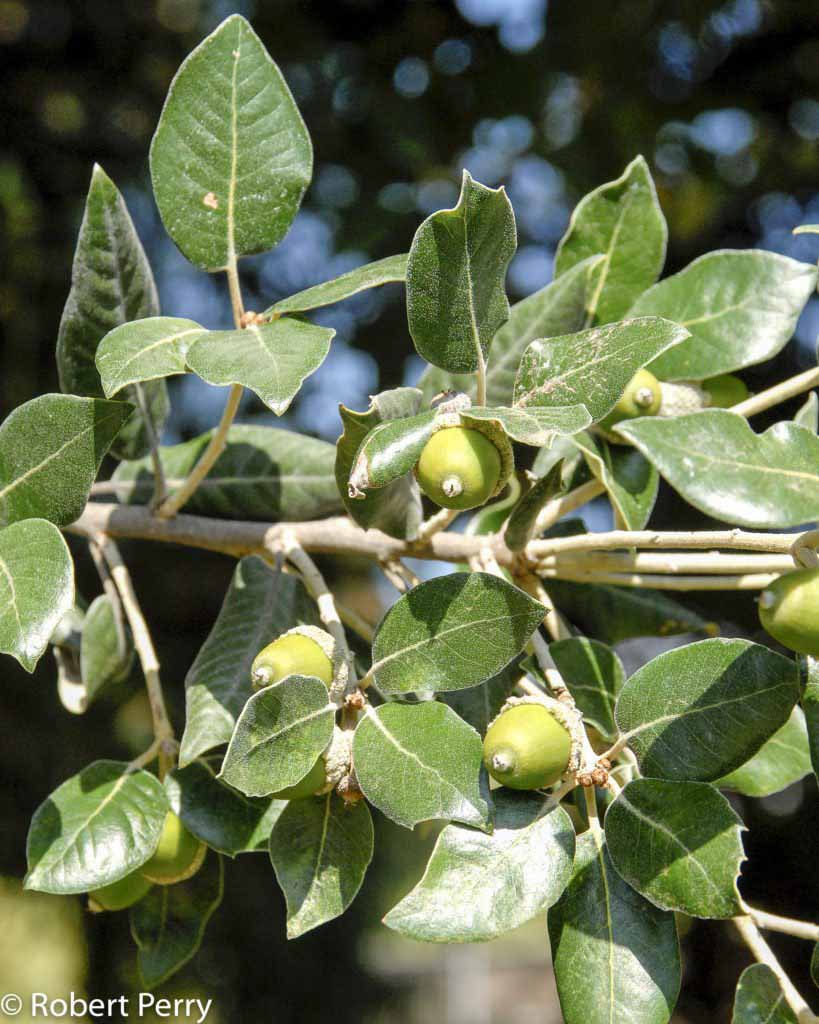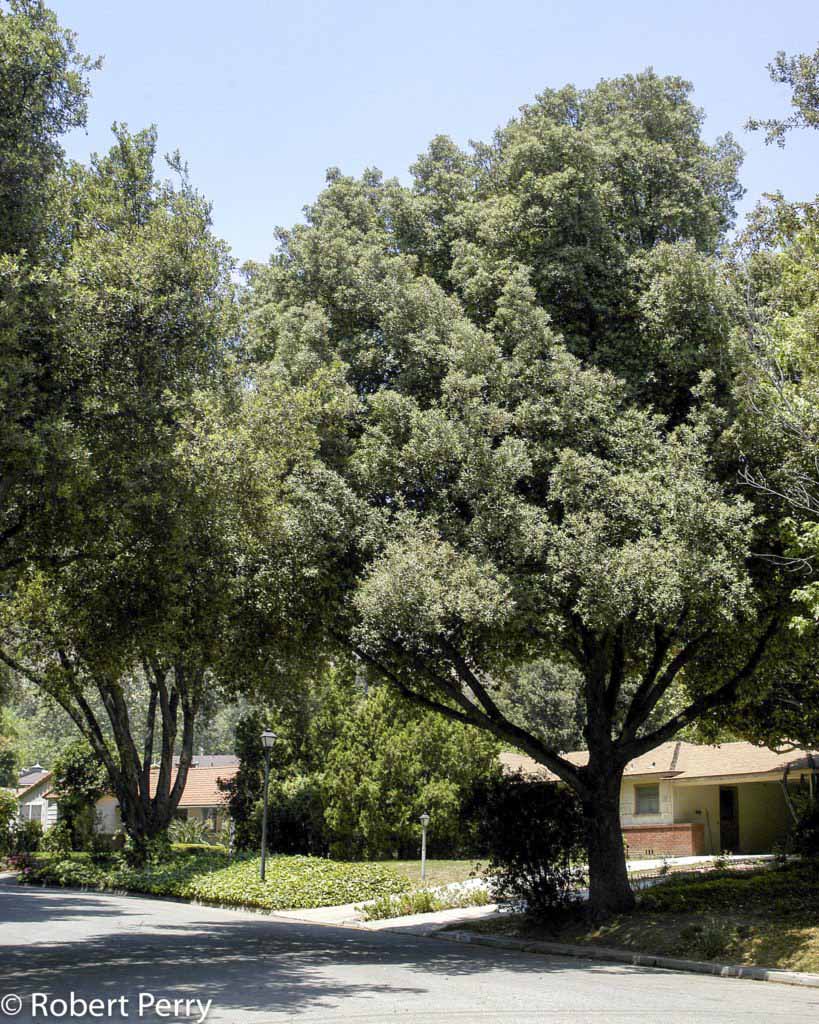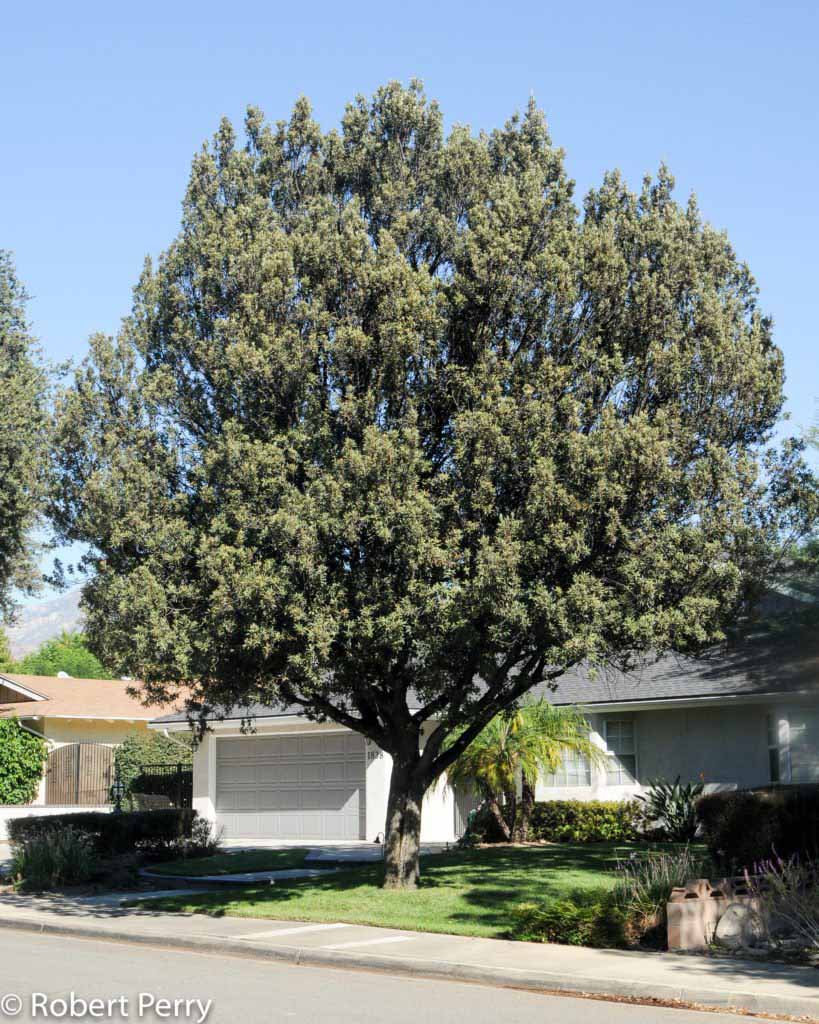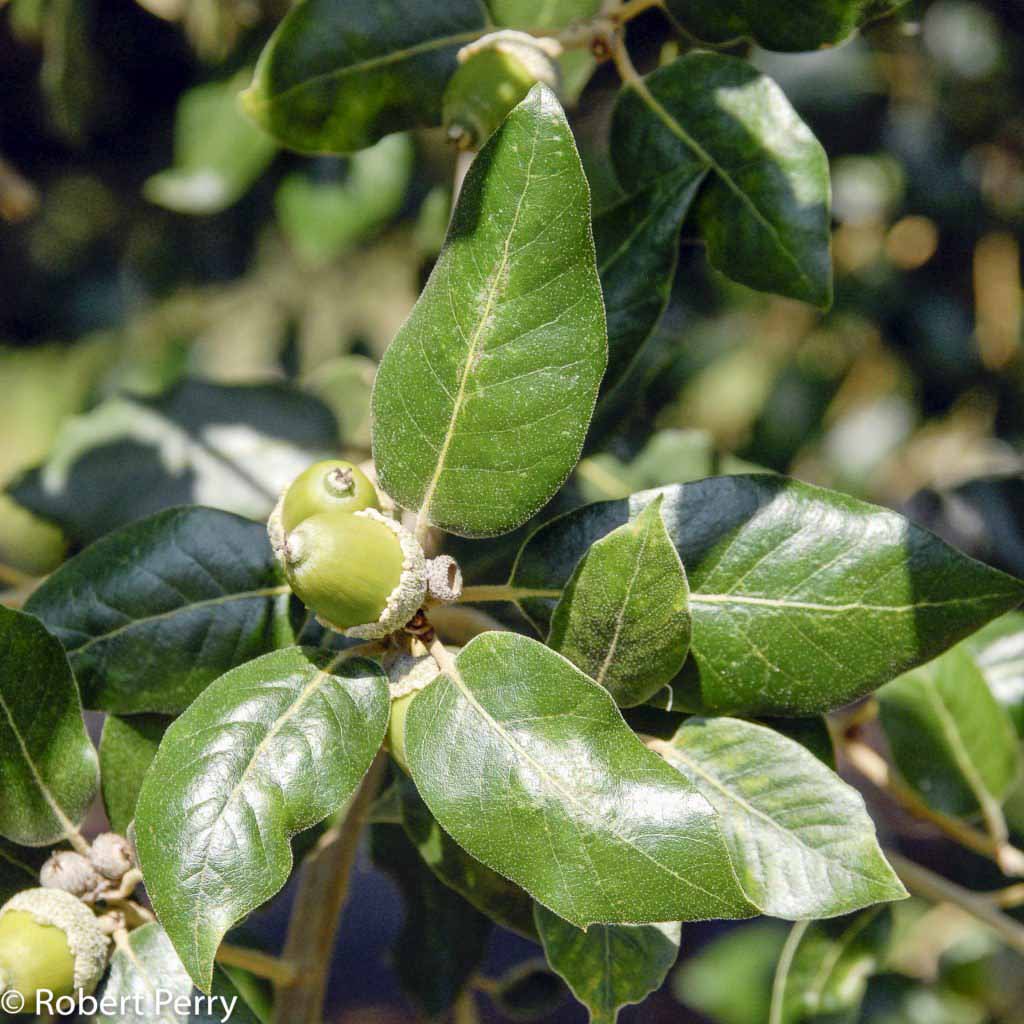Please note:
For most situations, we would not recommend installing this plant in new gardens, landscapes, or plantings in southern California. In the vast majority of situations, we recommend planting one of the California native oak species that grow well in southern California.
In the vast majority of situations we recommend planting either of our native Coast Live Oak or Engelmann Oak instead of Holly Oak. However, native oaks cannot thrive long-term in close proximity to the watering that lawns receive, which will cause their roots to rot. In spaces that are adjacent to lawns, especially near large lawn ares found in parks, schools, etc. if a large evergreen tree is desired, Holly Oak is considered to be more tolerant of summer watering than the native species.
This plant profile is included in this site as a reference for two primary reasons:
- If you already have this plant in your landscape, this information can be used to know how to care for it.
- If you already have this plant in your landscape, you can use this information to learn which of our recommended plants have the same recommended watering needs, making them potential choices for grouping together if you will be adding new plants to the existing area.
————————————————————
The Holly oak grows into a large evergreen tree with a dense canopy habit, 30-60 ft. tall and as wide. Leathery leaves are dull green above, white below, and have intermittent spines on the margins. Pointed acorns are round, 1 in. long with the base often covering half the nut. Young trees develop an upright habit for the first 15-20 years before broadening into a rounded shape as they mature.
Holly oak comes from the Mediterranean region of Europe, including the western Himalayas where heat, cold and seasonal drought are common. It is a highly adaptable species that has been widely planted across the Inland Empire along streets, in parks and in residential landscapes . It shows tolerance to heat and aridity like our native oaks, but has a greater tolerance for summer irrigation. Many trees have been planted in lawns and gardens for deep summertime shade. If planted in or adjacent to a lawn, occasional deep irrigations that soak the root zone down to approximately 18″ are important during both establishment and afterward to train roots to grow deeply. Large trees, including Holly Oaks, that only receive the consistent shallow irrigation that lawns get tend to have shallow root systems which can leave even very large trees prone to blowing over in Santa Ana wind events.



